When we published our video last week about the Holdfast and the Batten I’d hoped that at least a few people would find it to be useful but I certainly hadn’t imagined the huge response that we received. I’ve had heaps of emails alongside the comments letting me know that people have popped straight out in to their workshops to create themselves a batten. And the best part… it actually worked! (many people seemed particularly surprised about that!).
This is exactly the kind of thing which I hoped our videos could do and it’s really exciting for me to know there’s plenty of new battens out there being used. This method also comes without prejudice of how you approach your woodwork – I’ve been known to use it whilst making cuts with a router (yes, I mean the sort with a plug!).
When we set out to start making videos we had a lot of discussion here about what we might be letting ourselves in for. We all know that the internet’s great for learning and sharing ideas but I can’t help but take note of the long list’s of undeserving offence comments that can be left after so many YouTube efforts – would we be opening ourselves up to the same?
Well, so far so good in this regard and what a relief. But I have caught wind of a few nit pickings, although in a five minute video I don’t suppose to address every issue or opportunity that a technique might cover so I can but raise a smile to these. There was one point though which I was reading yesterday that I felt would be worth a bit of discussion – this was a criticism of my planing technique due to not holding the plane with a three fingered grip.
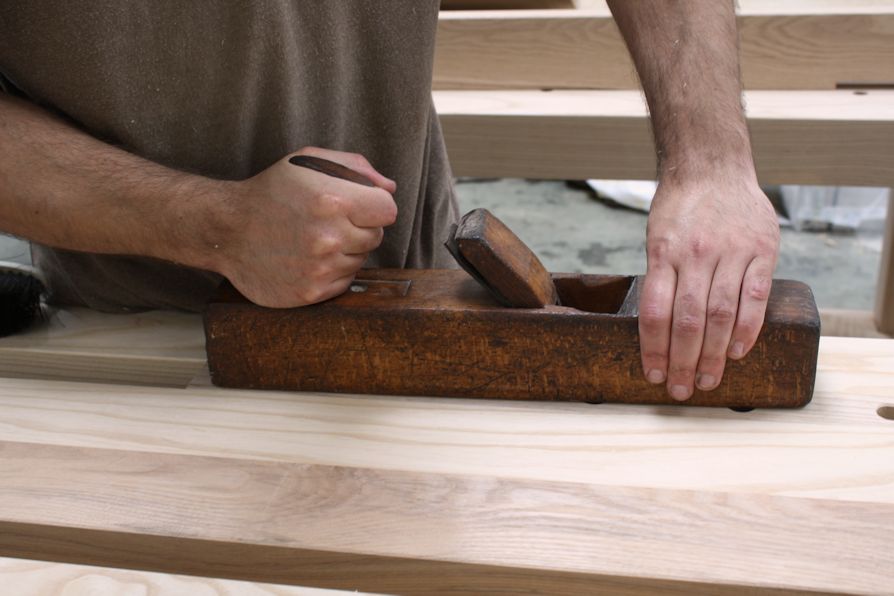
When I read this my first reaction was to duck. In my training I’d always been shown to use a three fingered grip and if I was ever caught doing this wrong then whatever was in my old man’s hand could come flying my way, including the odd cup of tea!
However that rule didn’t stand for the plane in question. This plane was designed for a four finger grip and no matter how I look at it can not be held with the more conventional three fingers. My hands are as big as shovels but still my outstretched forefinger can only dangle in thin air, there’s just nowhere for it to sit that could be of any use. Since this plane’s set up for heavy shavings and I only use it when I’ve a lot of material to remove that suits me just fine. Having all four fingers gripping allows me to get a stronger handle and throw my mass (which I happen to have plenty of!) against it to really hog away. As these heavier strokes aren’t intended to have fine control then I don’t see the lack of the fore finger to be a problem.
Here I am attempting a three finger grip (above). And here’s another plane of a similar length that can be used comfortably this way (below). I use this plane for finer work.
There are many more ways which I hold my planes including one where I don’t use the handle at all (great on a low bench) and another where I grasp the handle with a three fingered grip but outstretch my pinky along the length of the plane body. I think planing technique can alter depending on the plane, the use and the situation so bench height is another baring factor. In the video I was at a 34″ high bench which is far from my ideal for planing; I prefer my lower bench when making furniture and this is only around 29″ so quite a difference – with this bench I can even get away with a bit of a ‘sit on your work’ while you plane method!

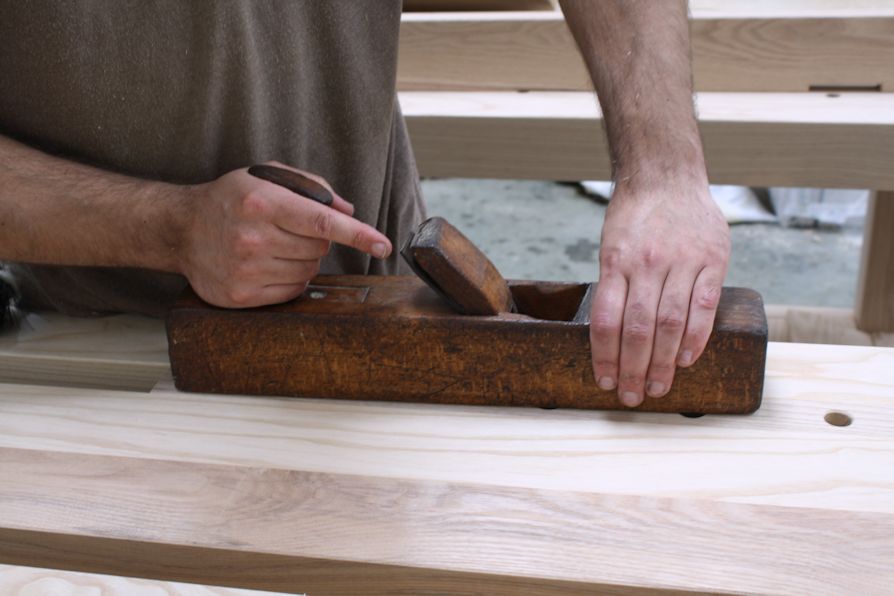
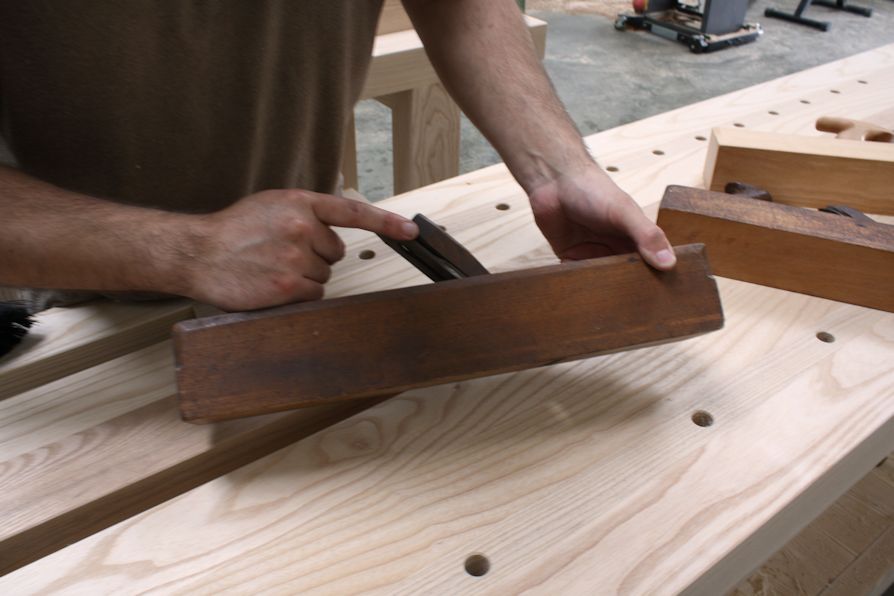
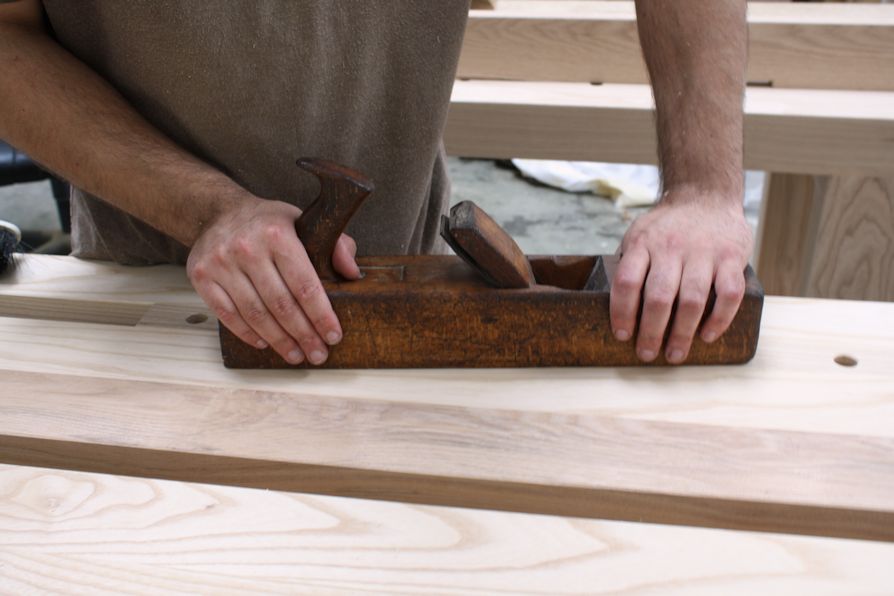
![Which Saws Are Best For Ripping Thick Stuff? [Video]](https://www.theenglishwoodworker.com/wp-content/uploads/2022/12/what-hand-saw-is-best-for-thick-rip-cuts.jpg)
![How do I Sharpen a Router Plane? [Q & A Video]](https://www.theenglishwoodworker.com/wp-content/uploads/2022/11/how-to-sharpen-a-router-plane-video.jpg)
![Bench Top Edge Jointing [with Video]](https://www.theenglishwoodworker.com/wp-content/uploads/2022/10/bench-top-edge-jointing-video.jpg)
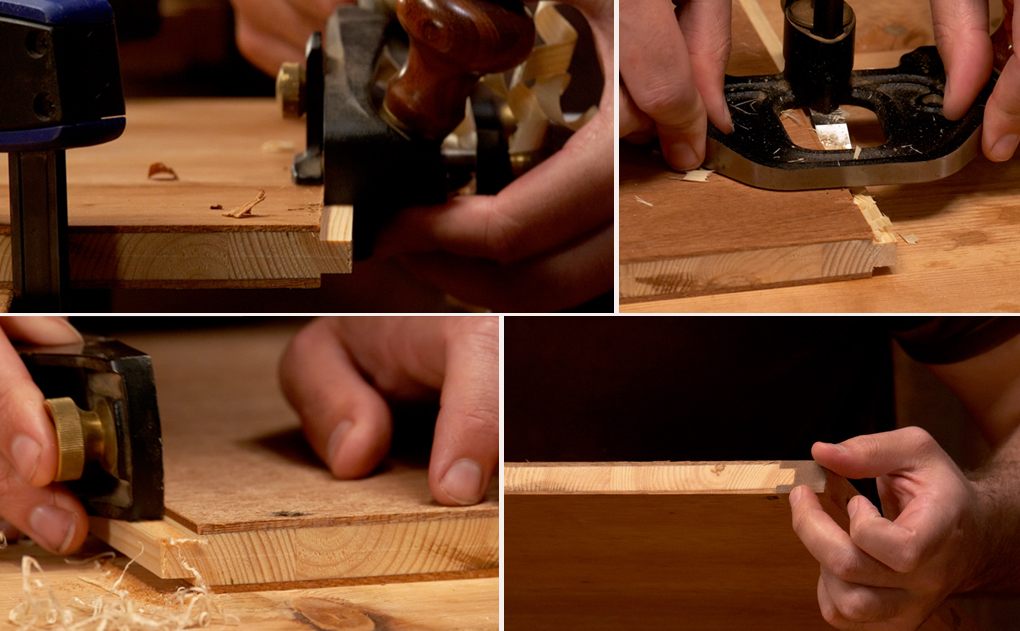
I point my finger when using a hand saw, but never thought about it on a hand plane. I’d say do whatever is the most comfortable for you, and let others do whatever makes them happy. You just can’t please some people!
Toby
Thanks Toby, as with a saw the outstretched finger can help aid your control with a plane although I find in some situations it’s just uncomfortable or unnecessary.
What to do with the index finger also seems to perplex me when I use bevel up planes with totes. I’ve thought about making a custom tote with an extra long “horn” for my finger to rest, but a.) I’m lazy and b.) I haven’t come up with a shape that isn’t totally bizarre.
I bought by first bevel up plane (Veritas jack) recently and have the same problem. My index finger is constantly looking for somewhere to rest and I find it difficult to plane accurately. Plenty of wooden planes have more sunstantial totes so it’s certainly do-able. I’ll make a new tote when you do, Jeremy!
George.
Hi Jeremy, should you ever come up with that solution I’d love to know – I found the same problem when I first tried out a bevel up plane. When I met a couple of the guys from Veritas last year at the European woodworking show I asked them if they could just weld an extra bit on… I guess they get that a lot!
Are we going too far here? Like which knife or fork to use at a formal multi course dinner, or maybe pinky up while drinking our tea? I feel the main thing is, is to USE the tool. Not just own it and have it on the shelf. As long as you are comfortable with it and the end result is what you set out to do, how you hold is not important. Most of us work by ourselves in our own shops, who is going to correct us as to hand/finger position as long as the finished project meets high quality standards. At the same time safety and common sense rule all tool usage
Thanks Dave, I’d certainly agree with you there and I’d go as far to say that it’s the results that you create with the tools that are the most important. We all need guidance especially if we’re new to something but I find that reading information that is overly prescriptive can just be frustrating, it’s good to know that there are many approaches and experience will soon find you one that’s comfortable and effective.
I’ve never had any formal training regarding handling a wood plane so it’s stuff you pick up but it’s definitely an individual thing. If you look at anybody who handles tools (including sports equipment)you’ll notice everybody has their own way. Three fingers? What if don’t have three fingers?
I found your website in a round about way as i was considering building my own workbench and stumbled across Paul Sellers building one on YouTube. If you haven’t come across him, have a look, as he also seems very traditionalist. As for planing, look on YouTube for his video part 2 on making a work bench. He not only uses a planer fore and aft but ‘throws’ it side to side and also draws it backwards. I’m sure the purists are cursing!
Richard, i hope you don’t mind me using Paul Sellers as an example. The batten holder is brilliantly simple. Don’t concern yourself on the knockers as one thing i do know is that you can’t please everyone all the time. Your website is great and it’s free and they shouldn’t forget that.
Hi TC, thanks for bringing Paul up, he does some great stuff with his hand tools and doesn’t become overly concerned with a ‘purist’ approach. No matter how we’re taught we certainly find our own ways of adapting to suit us better.
This is actually an interesting topic. Though there is no “right way” to do anything, or at least that’s what people love to say now a days. People need to at least educate themselves as to WHY these methods exist in the first place before they just through them to the curb.
The three finger grip is widely used for a couple reasons starting with saws. Saws have been used with a three finger grip for over 100 years. The finger extended caused your wrist to stay straight and helps you guide your arm in a straight line, so you can cut straight lines. As a side not, your finger extended also causes you to have a weaker grip, which is better on a saw. Both are good reasons to use this method on a hand plane.
For hand planes, or should I say metal planes in the Stanley/Bailey style, the finger extended has two reasons I know of. One, most people have a hard time wrapping all there digits around a tote comfortably. Second, the functional reason. You can adjust your depth of cut with that extended finger whilst you are actually planing. No reason for it on a wooden plane, unless you can hammer a wedge with your index finger.
Other than that, Keep up the good work and realize that some people post comments on YouTube just to be jerks, doesn’t matter who you are or what you are doing. Just have to learn to ignore them or delete their comments. 😉
Good Day Sir.
Thanks Bill, that’s really informative. Great point with the depth adjuster, it’s definitely an extra reason to stick out that finger with a metal plane. With most wooden planes I support my forefinger out on the wedge as well but have never tried to hammer it down with it though! 😉
Whatever feels natural, I don’t worry about it, if it feels right, and it works for you, thats the way to work.
Just my humble opinion 😉
Thanks Ken, well said!
So that’s why my jointer has such a funny bulge on the grip. It’s a resting place for my index finger!
[IMG]http://2.bp.blogspot.com/-87wQ6kEjvqA/T9T9Xgk56iI/AAAAAAAAAjI/dSeUbEJqFos/s1600/jointer.JPG[/IMG]
Great plane Kees! I’ve never seen one with a finger rest like that, I would assume that’s what it’s there for?
No idea really, never seen it before either.
Hi Richard,
I’m funny I guess, I’ll be out in my shop working and things I have read or heard will come floating back to the top in my mind. An so then I start pondering on them while I am working. Like the couple times in your posts that you make mention of your father, as in this thread about how to hold a plane. So I’m wondering then how much he was instrumental in setting a good example and helping you to become such an outstanding woodworker. I’m guessing he played a big part in your training. He himself is probably a fine woodworker as well as a teacher. Am I correct in this thinking? It might make a good side note sometime to do a blog entry on your father. I know I would be interested in reading about him or indeed any member of either of your families.
Mike
Hi Mike, my old man certainly had a unique way of teaching but yes, he’s passed on an awful lot of what I know and I’m very grateful. I’m sure I’ll get around to writing about him more at some point. Cheers, Richard